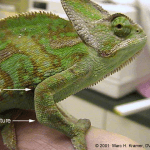
Image Credit – Hema
For people living with Cystic Fibrosis (CF), bacterial lung infections are not just a complication—they are a central, life-limiting feature of the disease. Because the defective CFTR (cystic fibrosis transmembrane conductance regulator) protein in CF causes thick, sticky mucus to build up in the lungs, the airway environment becomes a fertile ground for harmful bacteria to thrive. These bacterial lung infections drive inflammation, lung damage and ultimately contribute significantly to morbidity and mortality in CF.
Bacterial lung infections in cystic fibrosis patients tests suggest

That’s why the announcement of a potential drug that could ease the impact of bacterial lung infections in CF patients is so promising. Let’s explore what the research shows, what it means, and what still needs to be done.
What the Research Found
In a study published by researchers at University of Pennsylvania and affiliated institutions, scientists screened over 2,000 approved-drugs and natural products and found that tannic acid, a common natural compound, may help mitigate the effect of a harmful bacterial enzyme in the context of CF lung infection.
Specifically, they found that the enzyme produced by the bacterium Staphylococcus aureus (SMaseC) can further suppress CFTR channel activity and also impair immune-cell potassium channels (Kv1.3), thereby compounding lung infection and immune dysfunction in CF. Tannic acid inhibited this enzyme’s negative effects in lab experiments performed in frog oocytes and human lung cell lines. The researchers suggested that, when used alongside antibiotics and standard supportive care, the SMaseC-inhibitor may offer a therapeutic improvement over current treatments.
Another research front: scientists at the National Heart, Lung, and Blood Institute (NHLBI) found that a widely-used antifungal drug, Amphotericin B, in experimental models improved lung cell function and boosted antibacterial activity in CF lung tissue and animal models—highlighting a different strategy: using existing drugs in new ways to help counter bacterial lung infections in CF.
In addition, clinical data from the most effective CFTR-modulator therapy show that while the drug improves CFTR function and lowers bacterial loads in sputum from CF patients, it does not fully clear chronic infections. A study found that despite a drop of 2-3 log in key pathogens after six months, many patients remained culture-positive.
Why This Matters
Chronic bacterial lung infections in CF—particularly with pathogens such as Pseudomonas aeruginosa, S. aureus, and others—are one of the major drivers of lung decline. The sticky mucus, impaired mucociliary clearance, and persistent infection/inflammation create a vicious cycle: infection leads to damage, which leads to more infection and worsening lung function. Interventions that can lessen the burden of bacterial infection (or improve the lung environment so antibiotics and immune defences work better) represent a meaningful advance.
The promise of a drug (or repurposed compound) such as tannic acid or amphotericin B means we might gain adjunct therapies—not just more antibiotics, but therapies that target bacterial-host interactions or modulate the lung environment. That is particularly important given the accelerating problem of antibiotic resistance.
What Are the Challenges and What’s Next?
Despite the optimism, there are important caveats before this becomes standard care:
- The tannic acid work is still early stage; the experiments were laboratory-based, not human clinical trials.
- For amphotericin B and related approaches, further human trials are needed to establish safety, dosing, delivery (especially inhaled delivery) and real-world benefit in CF patients.
- Even with modern CFTR modulators, chronic bacterial lung infections are not fully cleared, meaning strategies that focus solely on CFTR correction are insufficient by themselves.
- From systematic reviews: inhaled antibiotics do improve lung function and reduce exacerbations in CF, but evidence is still of low certainty and does not clearly demonstrate improved survival.
Thus, while this potential drug (or drug repurposing) pathway is exciting, it must be integrated with existing therapies (antibiotics, airway clearance, modulators) and rigorously studied.
For people with cystic fibrosis, every new weapon in the fight against bacterial lung infections is welcomed. The research suggesting that a compound like tannic acid (or repurposed drugs like amphotericin B) could ease the impact of these infections adds a promising layer of strategy: go beyond killing the bacteria, and also tweak the lung environment or host–pathogen interface.
It’s not a magic bullet and won’t replace antibiotics or modulators, but as part of a comprehensive care plan it could make a real difference. With further clinical research and real-world validation, we may see better outcomes: fewer exacerbations, slower lung-function decline, improved quality of life—and ultimately, a longer, healthier life for those living with CF.
Stay tuned: as this research progresses, we’ll learn more about safety, optimal dosing, patient selection and how it can be layered into CF care. For now, the headline stands: potential drug could ease impact of bacterial lung infections in cystic fibrosis patients – tests suggest.
Frequently Asked Questions
What causes bacterial lung infections in cystic fibrosis patients?
In cystic fibrosis, thick mucus builds up in the lungs, creating a breeding ground for harmful bacteria. This leads to chronic bacterial lung infections that cause inflammation and long-term lung damage.
How do bacterial lung infections affect cystic fibrosis patients?
Bacterial lung infections in cystic fibrosis patients can worsen breathing difficulties, reduce lung function, and lead to frequent hospitalizations. Over time, repeated infections can cause permanent scarring in the lungs.
What new drug could help treat bacterial lung infections in cystic fibrosis?
Recent studies suggest that compounds such as tannic acid or repurposed drugs like amphotericin B may ease the impact of bacterial lung infections in cystic fibrosis by improving cell function and reducing bacterial damage.





![Best budget UVB for chameleon beginners in [year] image](https://mychameleononline.com/wp-content/uploads/2025/07/image-14-150x150.png)

